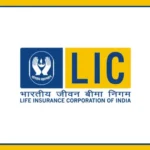Debit and credit cards have become essential in today’s cashless economy, with RuPay, VISA, and MasterCard dominating the payment network space.
While many users overlook the importance of the network printed on their cards, it is crucial to understand the differences and choose the card that best fits your needs.
What Are RuPay, VISA, and MasterCard?
All three—RuPay, VISA, and MasterCard—are payment networks that facilitate cashless transactions via debit and credit cards. Here’s a quick overview of each:
RuPay: India’s domestic payment network, launched by the National Payments Corporation of India (NPCI).
VISA: The world’s largest international payment network, offering global reach.
MasterCard: Another global payment network, popular for its wide acceptance and partnership with financial institutions worldwide.
New RBI Rule: Freedom to Choose Your Card Network
Since September 2024, the Reserve Bank of India (RBI) has allowed customers to choose their preferred payment network—RuPay, VISA, or MasterCard—when applying for or renewing credit cards. Previously, the bank selected the network for the customer.
Differences Between RuPay, VISA, and MasterCard
Operating Fees:
VISA and MasterCard: Higher operational fees, which are usually passed on to banks and consumers.
RuPay: Lower operational costs, making it more affordable for both banks and users.
Global Acceptance:
VISA and MasterCard: Accepted internationally, making them ideal for those traveling or transacting abroad.
RuPay: Primarily used in India, although some international transactions are possible with the RuPay Global Card.
Bank Charges:
VISA and MasterCard: Banks pay quarterly charges to these networks.
RuPay: No quarterly fees for banks, making it more cost-effective.
Bank Network:
VISA and MasterCard: Typically used by larger banks and global institutions, excluding smaller cooperative banks.
RuPay: Widely accepted by all Indian banks, including small and cooperative banks.
Features of Each Payment Network
VISA: Offers benefits like emergency cash advances, travel assistance, and access to a global ATM network.
MasterCard: Provides similar global benefits, including various card types like Standard Debit, Enhanced Debit, and World Debit MasterCard.
RuPay: Offers Classic, Platinum, and Select cards with a focus on domestic use and affordability.
Why Choose RuPay?
If you primarily make payments within India, the RuPay card is a more cost-effective and practical choice.
It offers lower fees and is accepted across the country. However, for frequent international travelers, VISA and MasterCard provide the convenience of global acceptance.

























